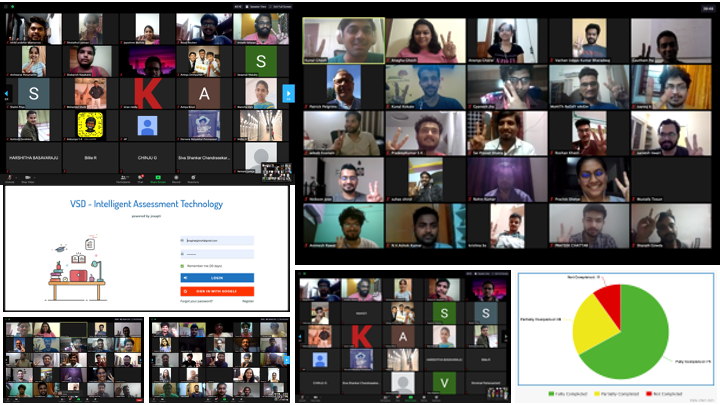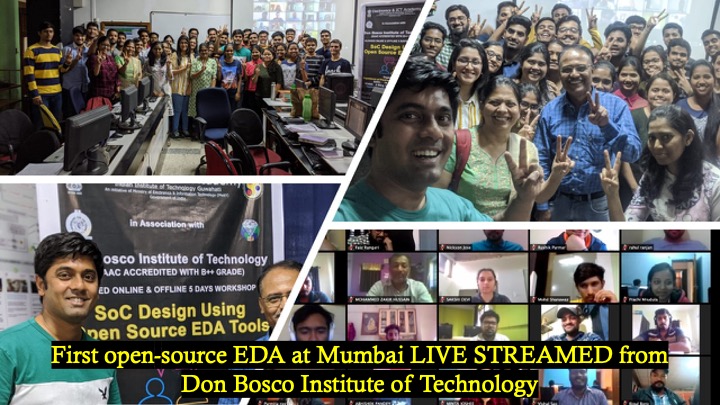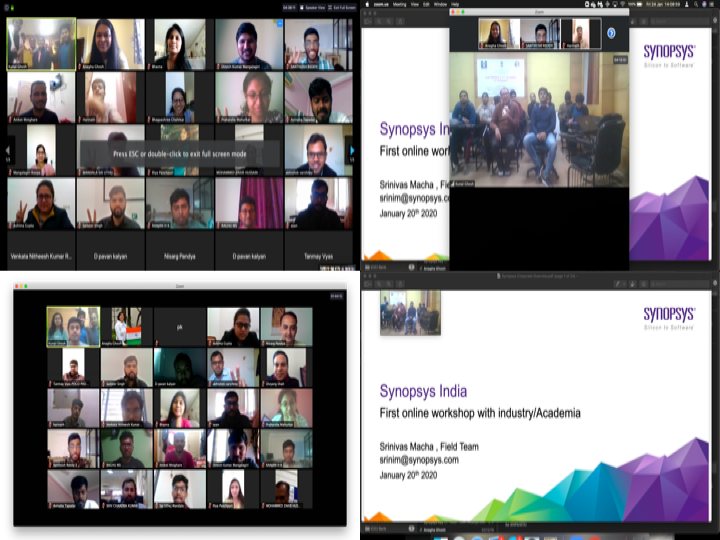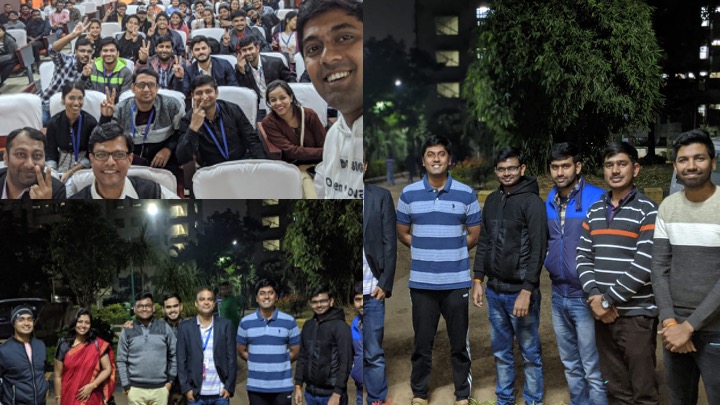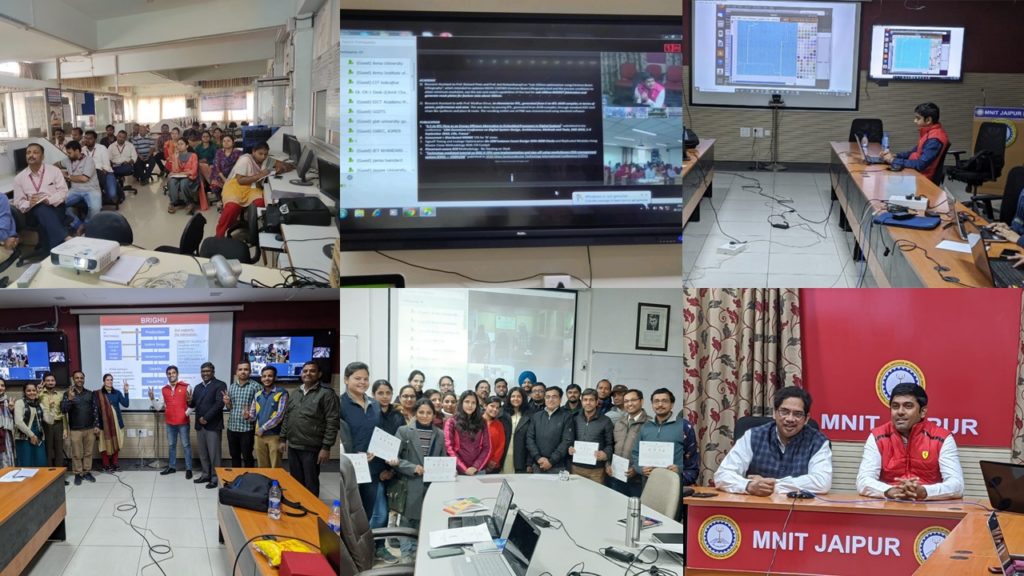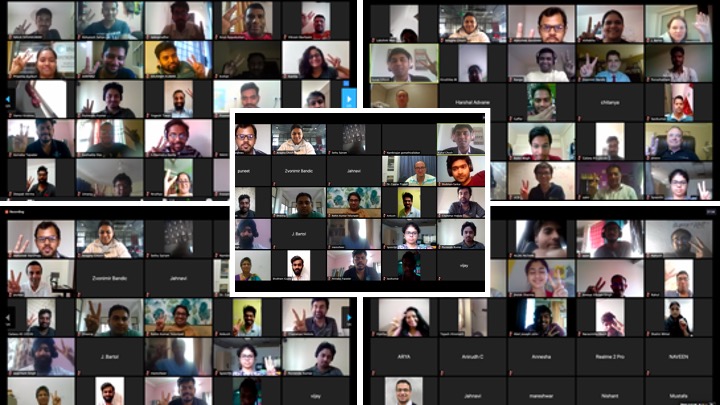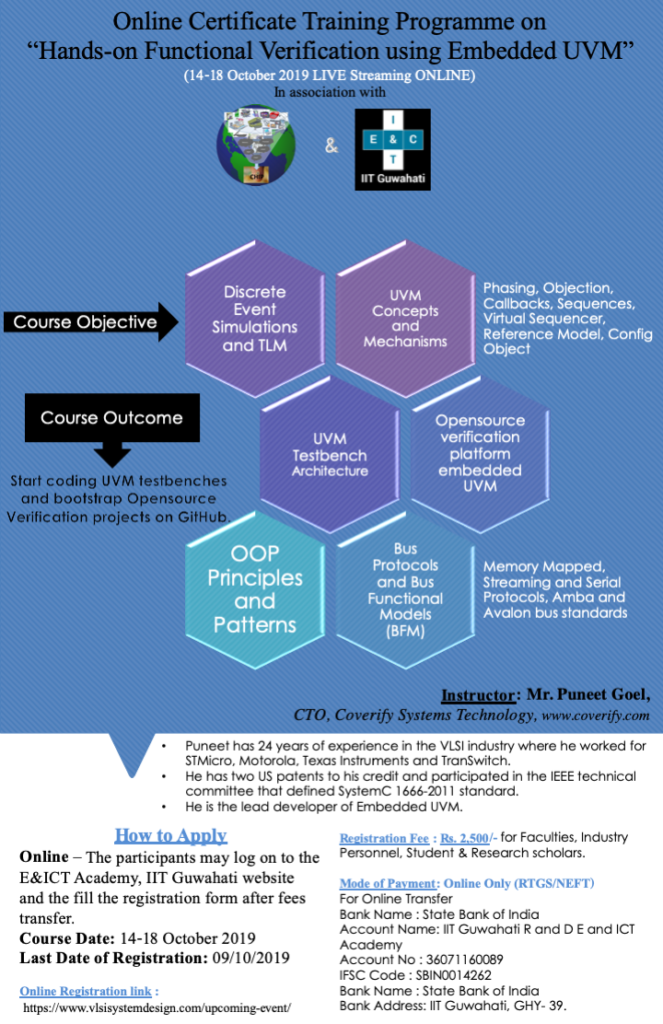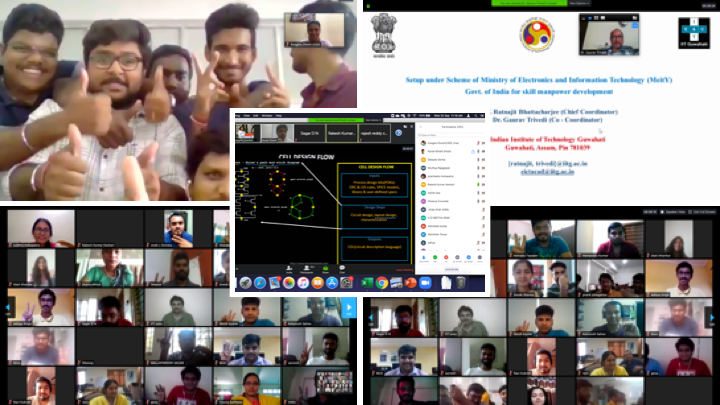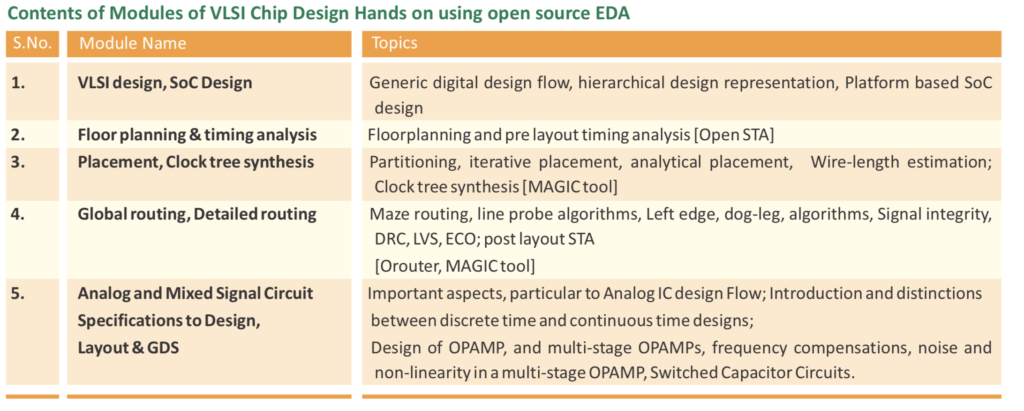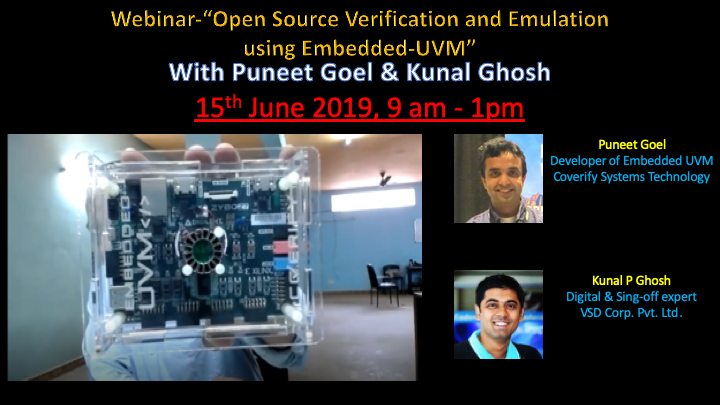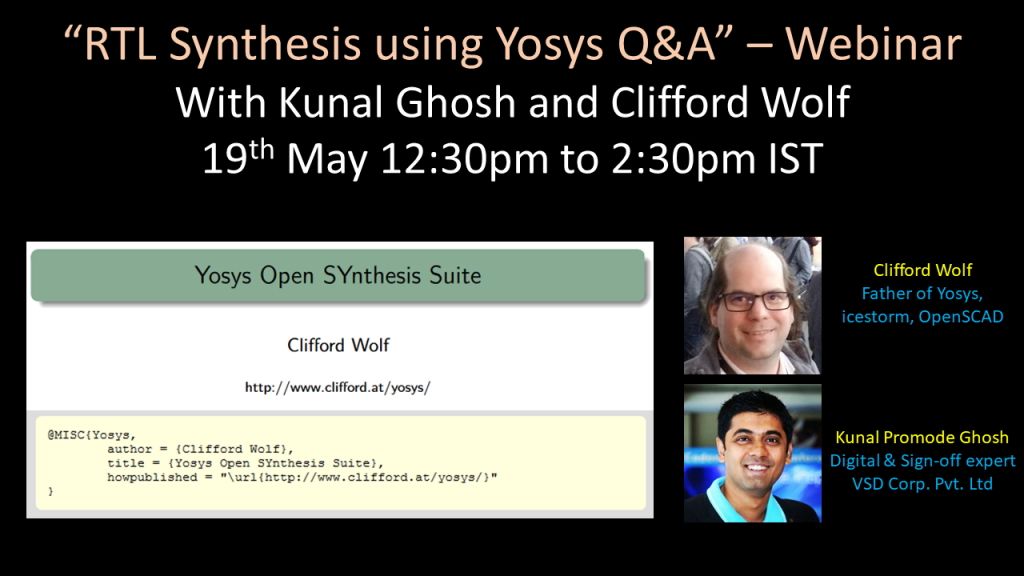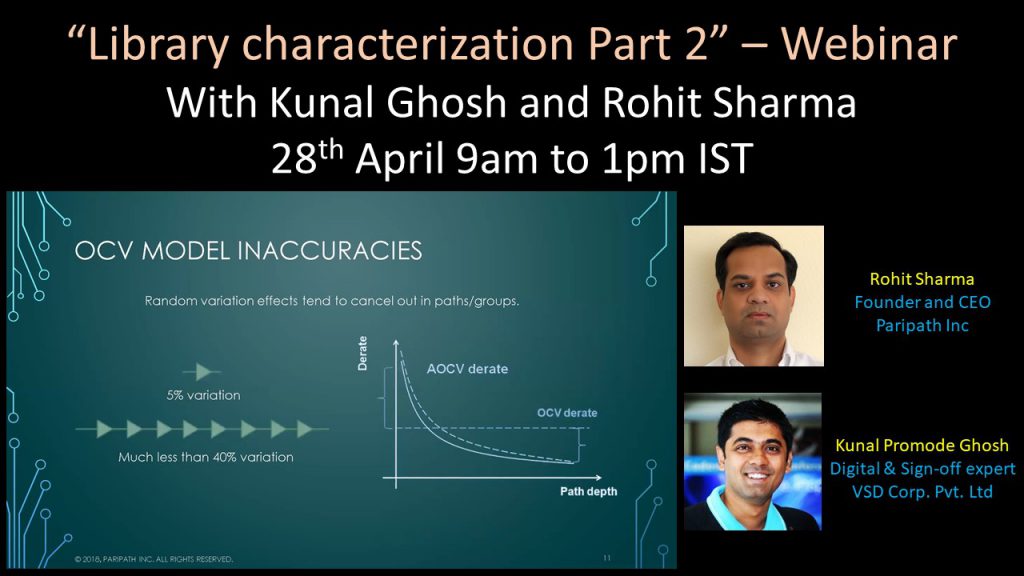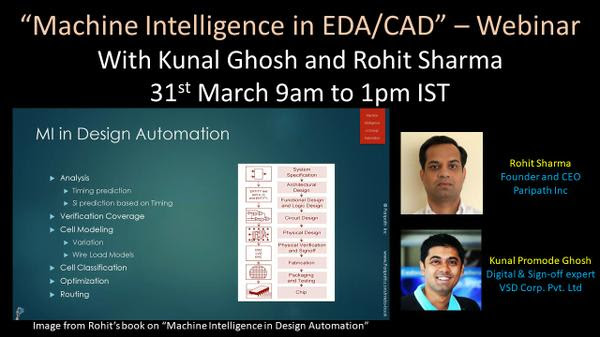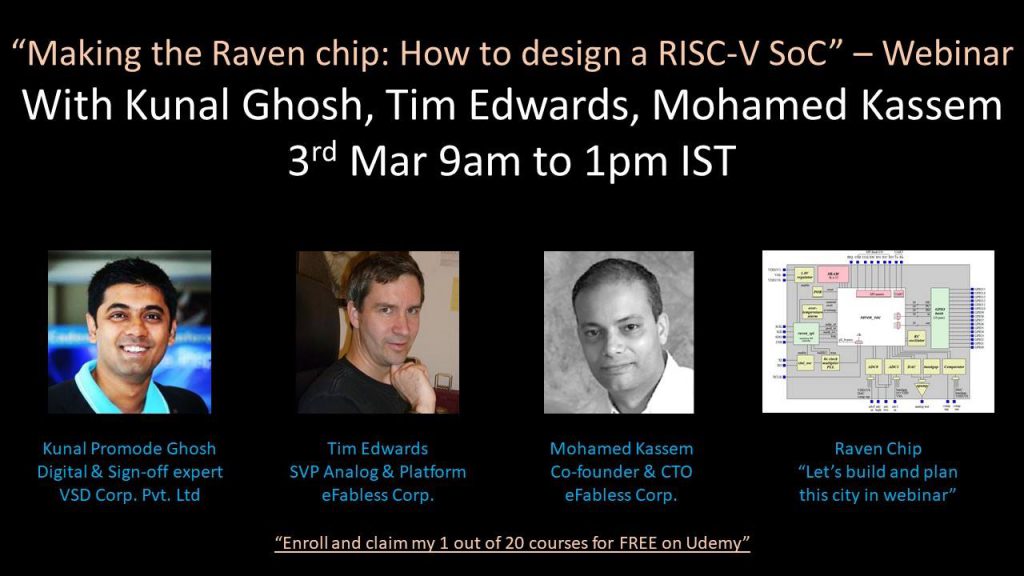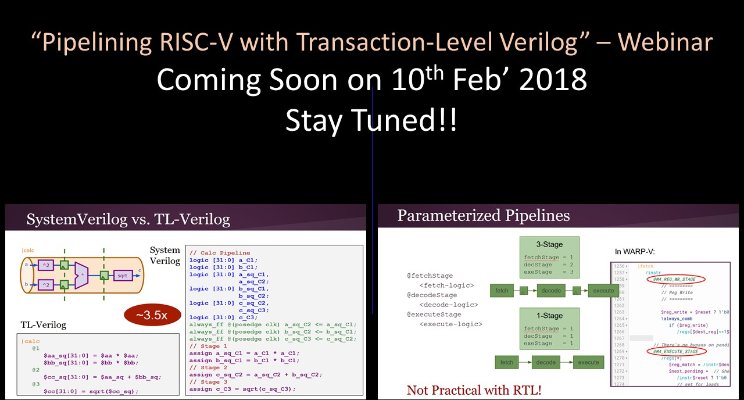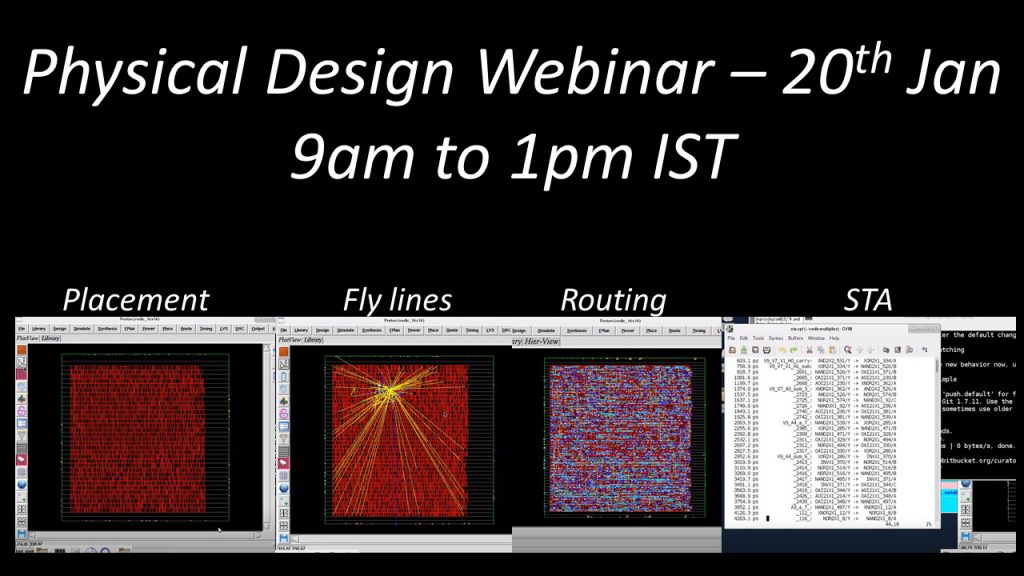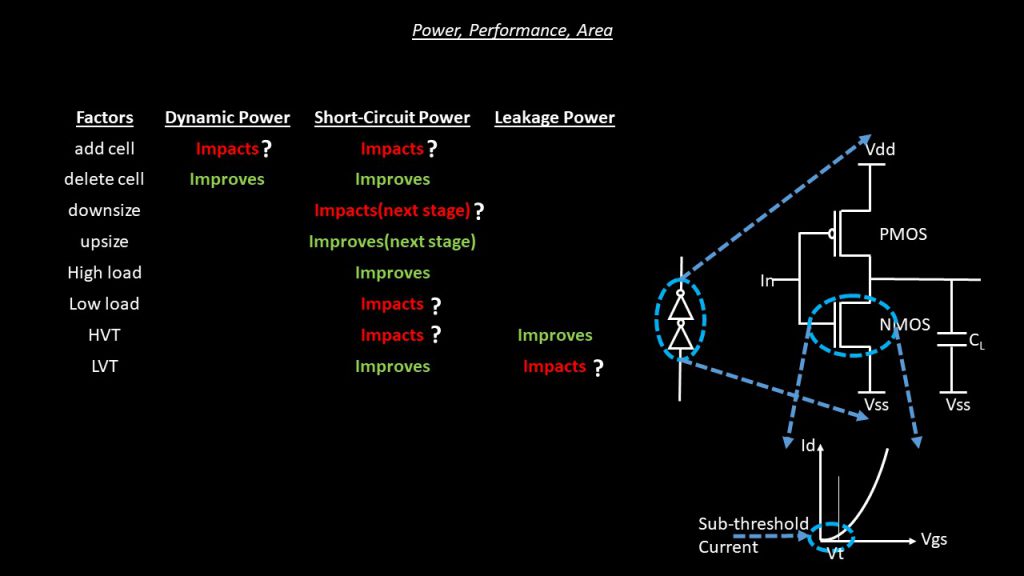
RISC-V enters India and VSD personally invite you…
Another chance, another medium, another platform for us to catch-up personally…. (You might want to forward this email to your colleagues staying close-by any one of below cities, and encourage them to attend this free event to learn more about RISC-V ecosystem in India)
We would like to invite you to attend one of the SiFive & Open-Silicon Tech Symposiums taking place at six different locations throughout India in August. See map in below image for exact locations and date of events.
I would be presenting a very important tutorial, which closely connects open-source ISA implementation to open-source EDA tools – “How to design complex RISC-V SoC with open-source EDA tools and time to productize design ideas?”
Because India has adopted RISC-V as the national ISA, the time is now to learn from the academic luminaries who created this open architecture, and the engineers who are facilitating the mass adoption of RISC-V through customized silicon, design platforms and accelerators.
The seminar is free to attend and will include a broad spectrum of guest speakers, ranging from well-known professors at Indian institutes and research organizations to company founders and senior executives from the U.S. and India who are witnessing, first hand, the momentum of RISC-V and its impact on the worldwide semiconductor ecosystem.
All the best and happy learning…
——————————————————
Webinar on “SoC Reference Design of the PicoRV32 RISC-V Microprocessor” – With Kunal Ghosh, Tim Edwards & Mohamed Kassem
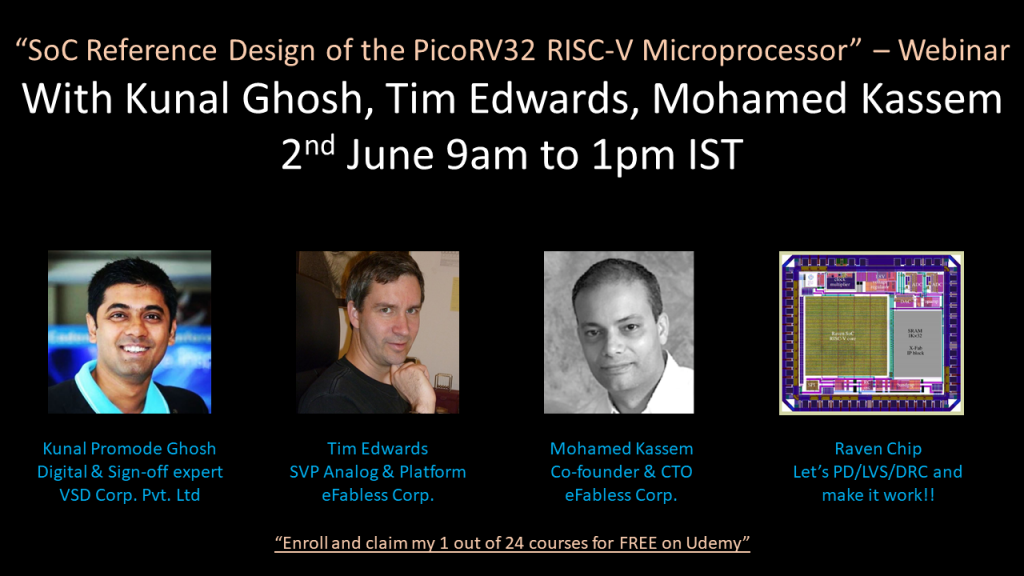
After successful webinar on Making of Raven Chip, this time we take the chip forward and implement using end-to-end opensource EDA tools, and all on efabless cloud. What does this mean to us? It means, you can start innovating on a design, build RTL and do synth/PD/LVS/DRC all using opensource EDA framework and not pay a single penny for license.
The big question How is this possible?
Thereby, I welcome you all to my next (follow-up) webinar with Tim Edwards and Mohamed Kassem on 2nd June and below is the
Webinar Agenda:
Part 1: IP digital flow and chip integration on efabless.com
- The efabless model (recap from Part 1)
- The efabless platform:
- The (updated) Marketplace
- CloudV (continued work in progress)
- Open Galaxy (updated apps)
- The Raven chip project (update)
Part 2: Digital synthesis with CloudV
- The CloudV platform
- CloudV ongoing development
- Interactive CloudV tutorial:
- Clone an open-source “soft” IP
- Synthesis using CloudV
- Export to Open Galaxy
Part 3: Synthesis flow on Open Galaxy
- Synthesis
- Placement
- Routing
- DRC
- LVS
- Interactive tutorial:
- Clone the raven_spi IP block
- Run through “qflow” synthesis steps to layout
Part 4: Full chip integration on Open Galaxy
- Floorplanning the core
- Generating and connecting the padframe
- Placing components
- Top-level signal routing
- Top-level power routing
- Interactive tutorial: Using the layout tool for top-level integration
Tips and tricks for using the Magic VLSI layout tool efficiently
Part 5: Full-chip verification on Open Galaxy
- Additional requirements: Substrate contacts, antenna tie-downs, etc.
- Final DRC
- Final LVS
- Interactive tutorial: Using the LVS tool for top-level verification
Tips for understanding LVS errors and how to fix them
Part 6: Challenge
Design and verify a small chip in 0.18 m technology
Padframe provided
1.8V only (no voltage regulator), applied CMOS clock (no oscillator)
- Create a simple verilog function (details TBD)
- Synthesize, place, and route the digital block
- Compose top level from padframe and digital block
- Route core to pads
- Verify DRC and LVS
Webinar “Distributed timing analysis in 100 lines code” on 26th May 2018 by Tsung-Wei Huang
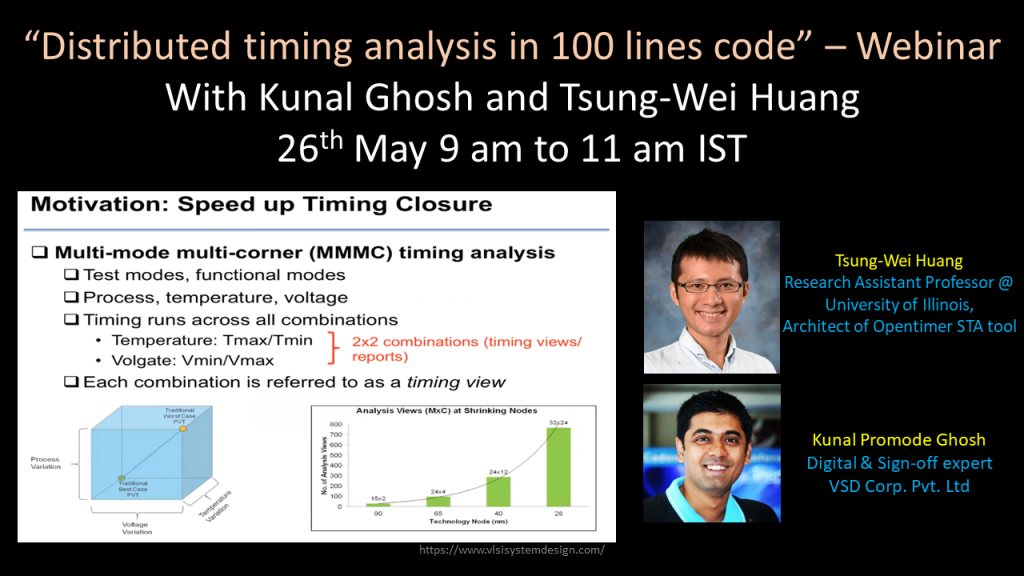
Recorded Version for people who missed it !!
VSD – SoC Design of the PicoRV32 RISCV micro-processor
————————————————————————————
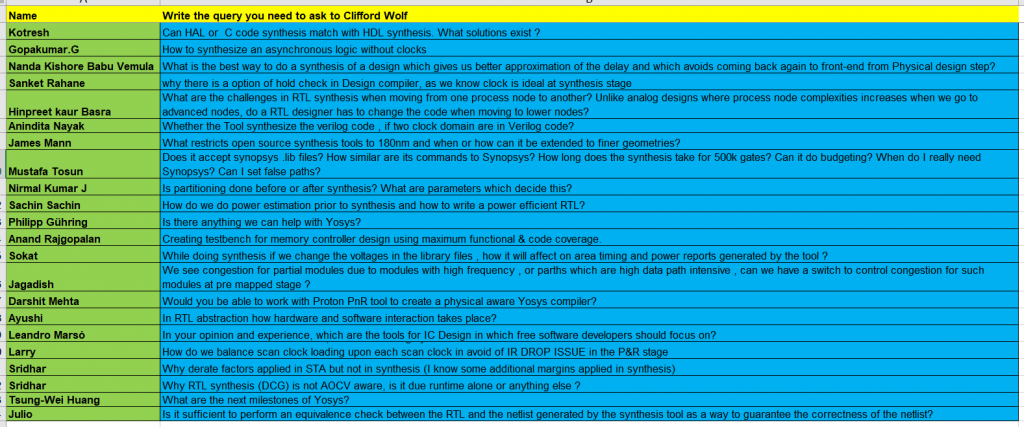
Note of Appreciation – I have worked with Clifford in my course on TCL programming Part 1 & 2, and really Thank him for all his guidance for making of TCL programming course.
